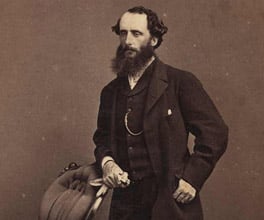Alfred Howitt
Alfred Howitt was an English explorer, magistrate and anthropologist, born in 1830. Like so many other migrants at the time, in 1852 he migrated to Victoria, hoping to make his fortune on the Ballarat goldfields.
Howitt took to life in the unfamiliar surroundings, and soon became an expert bushman. In 1859 he explored land around Lake Eyre, and his reputation as a bushman and explorer was soon widely known.
On this camp we only had three hours of sunshine during the day and in the shade the tin dish with which I was washing a prospect, froze to the ground while I was lighting my pipe to warm my nose.
– Alfred Howitt, 1860
Walker, M Howitt 1971, Come wind, come weather: a biography of Alfred Howitt, Melbourne University Press, Melbourne, Vic.
This quote comes from a source that seems to have been written by one of Howitt's descendents, so it might present a biased viewpoint. It would be worth looking at another source to get a balanced perspective.
In August 1860, the Burke and Wills expedition had set off from Melbourne bound for the Gulf of Carpentaria. For months there had been no word from the explorers, so in June 1861, the Royal Society of Victoria – who had organised the expedition – sent Howitt on a second expedition to look for Burke and Wills.
He left Melbourne at the end of June 1861 and proceeded straight to Cooper's Creek in South Australia. In September he found John King, the only surviving member of the party. King was close to death from starvation when the local Indigenous people rescued him. They were caring for him when Howitt arrived.
A few days after returning to Melbourne with King, the Society instructed Howitt to return to Cooper's Creek and retrieve Burke and Wills' remains. As a reward for his fine work, Howitt was appointed as the police magistrate of the Omeo goldfields. He spent the next 38 years as a public official.
From the 1860s onwards, Howitt gathered information about the social organisation of the Aboriginal tribes of Gippsland, documenting subjects such as boomerangs, canoes, name-giving, cannibalism, songs, message sticks, kinship and social relations.
This culminated in his major work, Kamilaroi and Kurnai (1879), now recognised as an Australian anthropological landmark. He continued to research and write up until his death in 1908.











